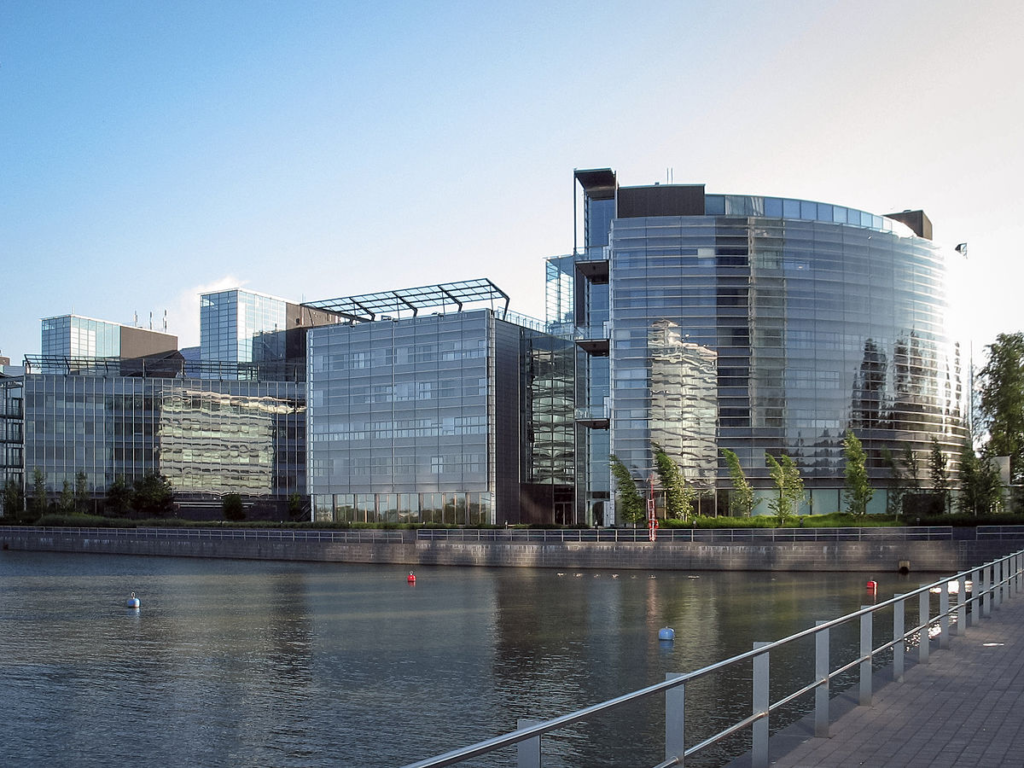
The conference venue in Espoo is situated in a former Nokia building, Keilalahdentie 2-4, now the office of Fortum, Microsoft Finland and Tietoevry companies.
The city of Espoo has grown from a vast rural area into the second largest city of Finland, having many commercial and administrative centres, as well as a large national park, Nuuksio. The venue is situated just a few metro stops from the capital Helsinki.
As Finland is not in the centre of Europe, here’s a few facts about our country!
Geography:
Finland has land borders to Russia in the East (1300 km), to Norway and Sweden in the North. Many of Finland’s borders are at sea. Most northern point on the map is 70°04′57″N 27°53′03″E and most southern 59°30′30″N 20°21′12″E.
Finland has many lakes, the largest of which is Saimen of 1 377 km². Finland is ”The land of the thousand lakes”. We also have much forestland.
History:
Finland was christened in the twelfth century by Swedish crusaders and was a part of Sweden until 1809, when it became a grand duchy of Russia, as a result of the treaty ending the Finnish War 1809 (between Russia and Sweden). The tsar of Russia ruled as the grand duke, but the legislation remained that of 1734 Swedish Law. Russian replaced Swedish as the administration language, and was also taught in schools while the majority of inhabitants spoke only Finnish. -The official languages are now Finnish and Swedish.
Finland gained its independence from Russia 1917. Finland is now a parliamentary democracy, with a president elected every 6 years. The president candidate has to get more
than 50% of the direct election votes. The parliament has 200 members which are elected in direct elections every four years.
Second Worl War:
1939 Soviet started war against Finland, and in the peace treaty, parts of Finland was transferred to Soviet Union. Finland became allied to Germany 1941, and tried in the new war against Soviet Union to win back territories. Due to Germany losing the war, this war led to huge war indemnities to be paid to Soviet, agreed on in the armistice of 1944. Finland built for instance ships and trains to be delivered to Soviet. Relative to Finland’s population this was the largest indemnity ever seen. In September 1952 the last deliveries were made. This war indemnity production was a boost for Finnish industrial development.
Culture, a few names:
Albert Edelfeldt, painter (1854 -1905)
Jean Sibelius, composer (1865 -1957)
Akseli Gallen-Kallela, painter (1865 – 1931)
Tove Jansson, Moomin creator and artist (1914 -2001)
Jorma Panula, conductor initiated a long row of famous Finnish conductors (1930 –
Kaija Saariaho, composer (1952 – 2023)
Business (or non-business):
Nokia mobile phones were well-known all over the world
Linus Torvalds, creator of Open-Source Linux System
Finland became a member of EU on 1st of January 1995, and of NATO on 4th of April 2023.
Finland has 5½ million inhabitants.